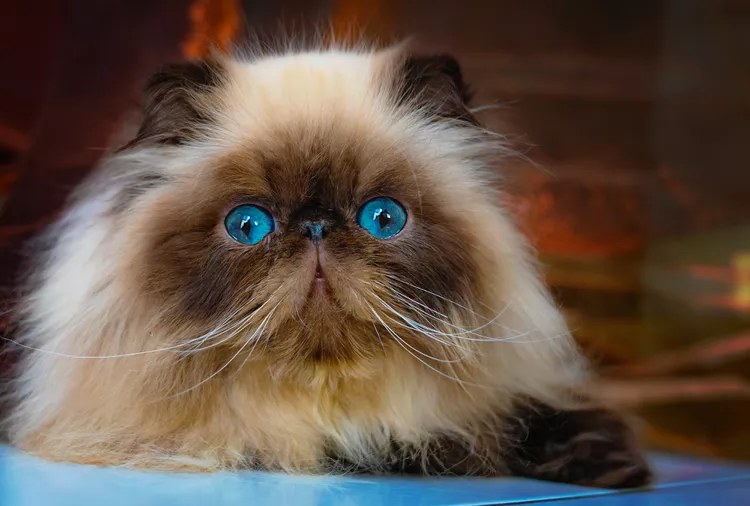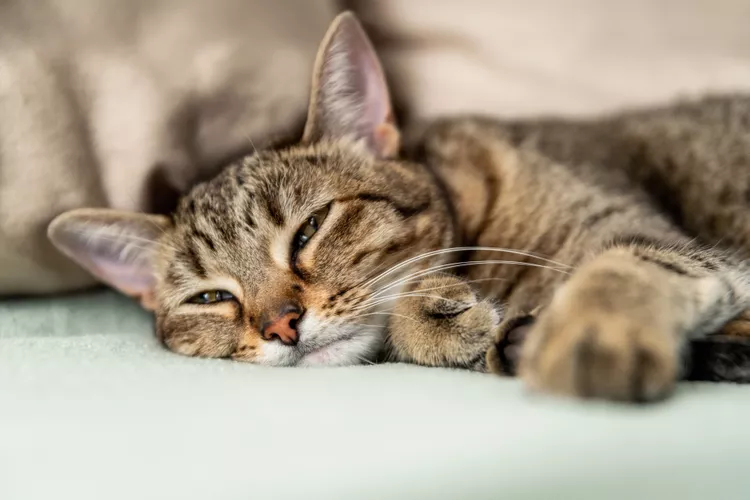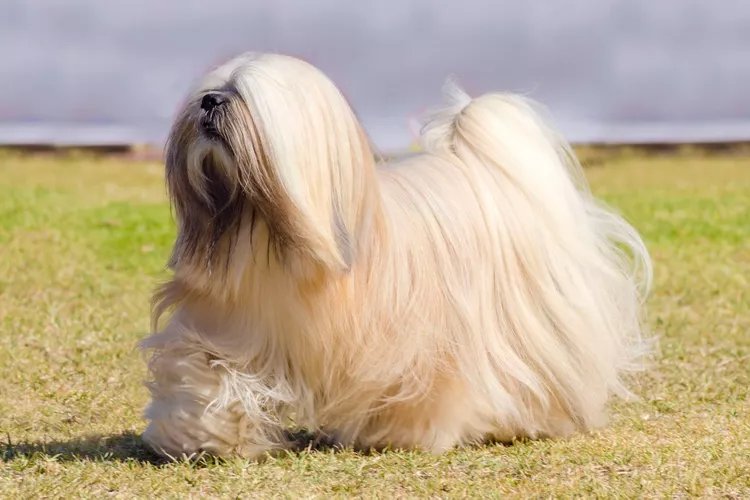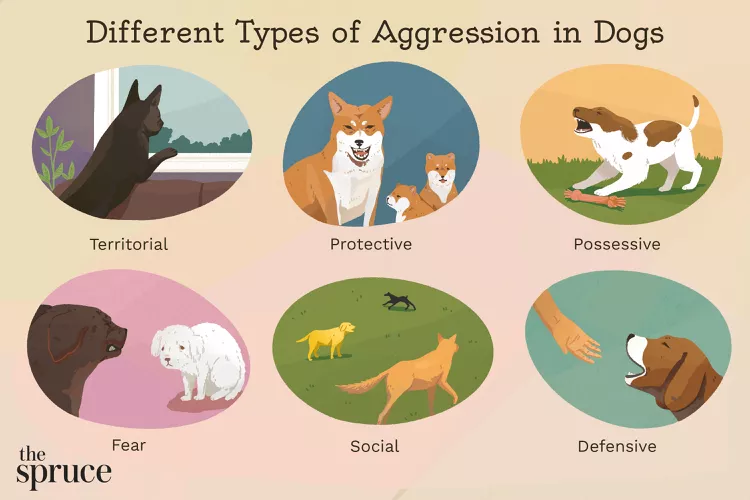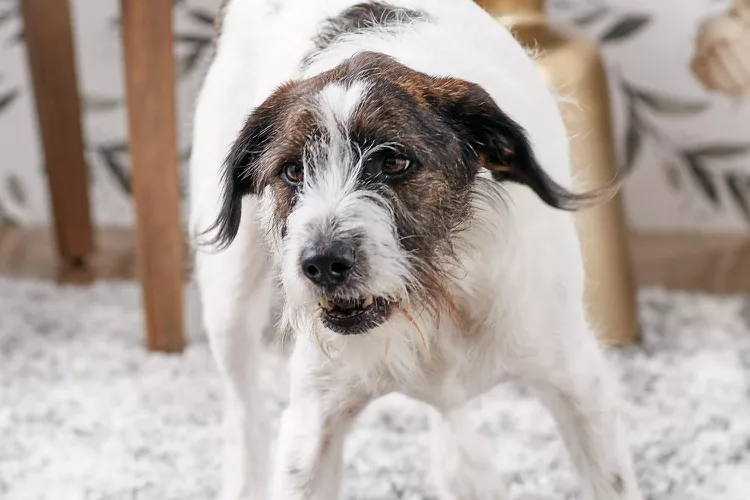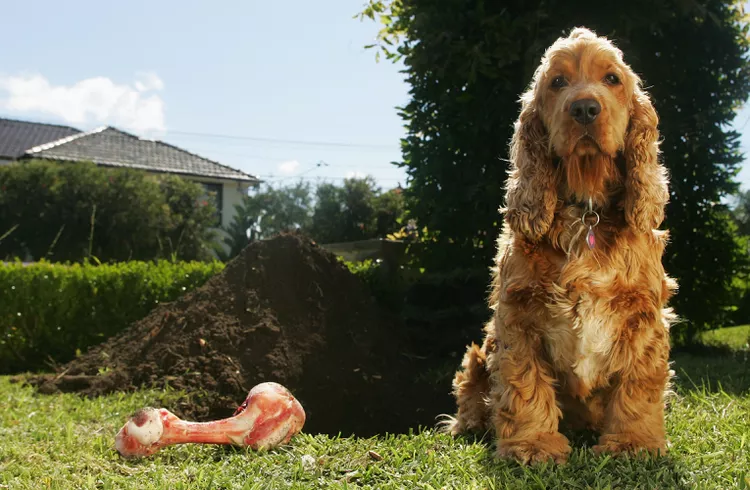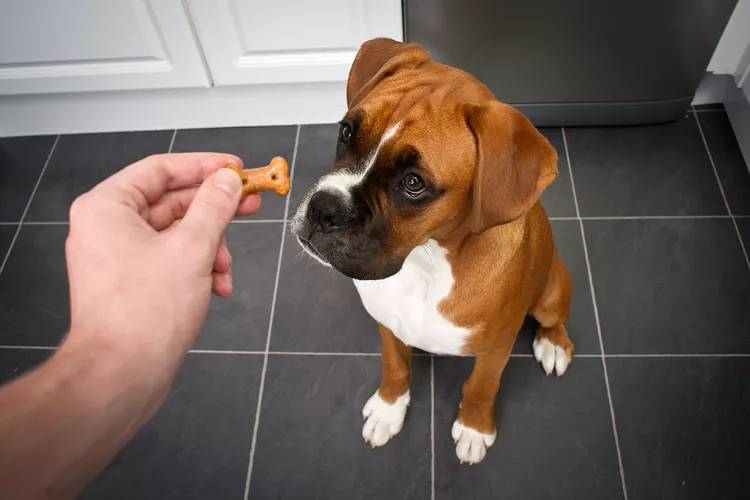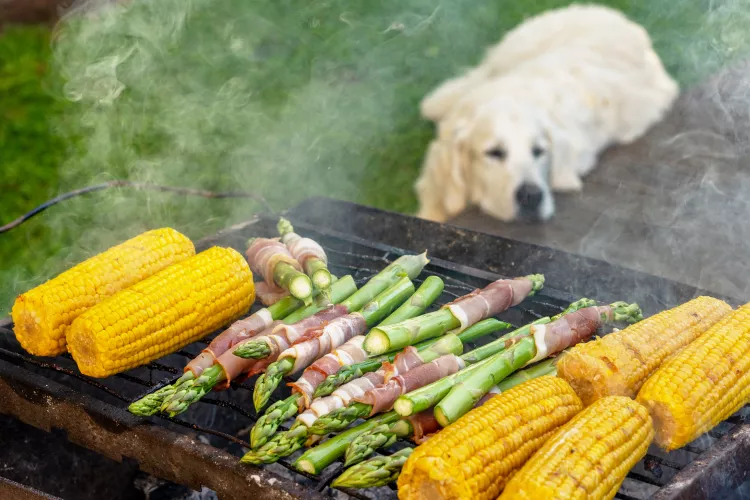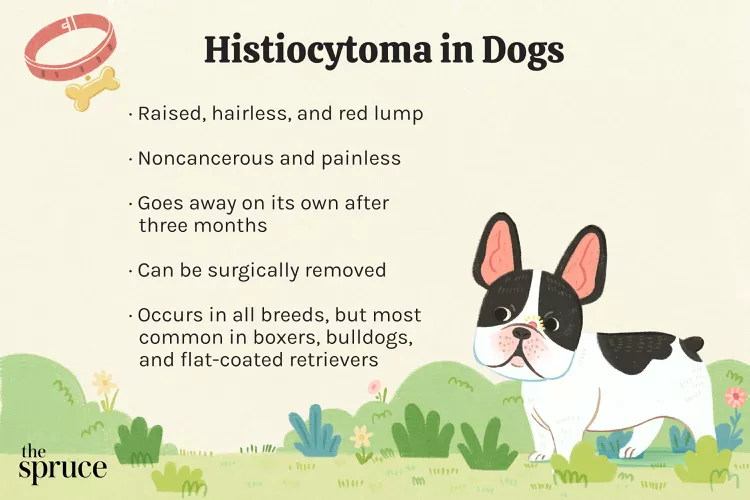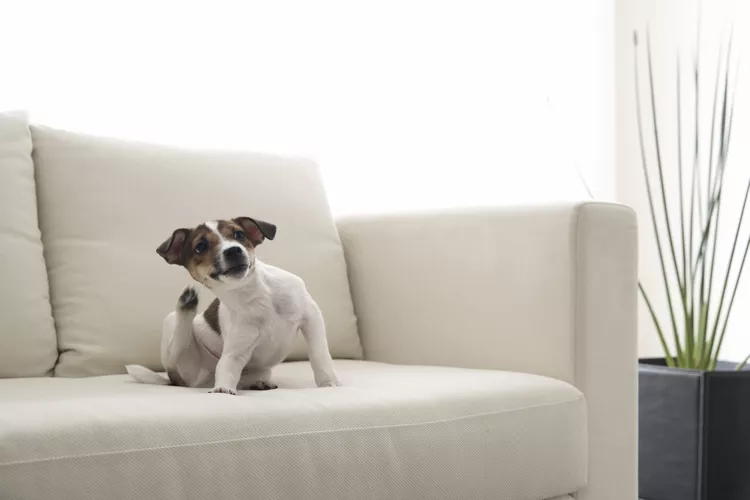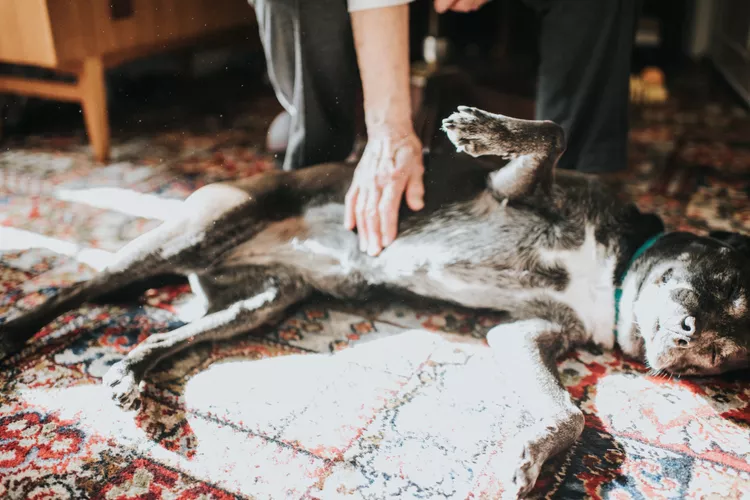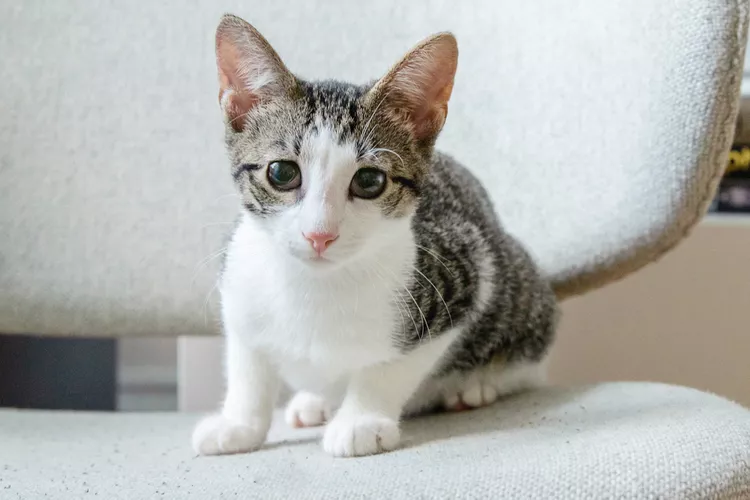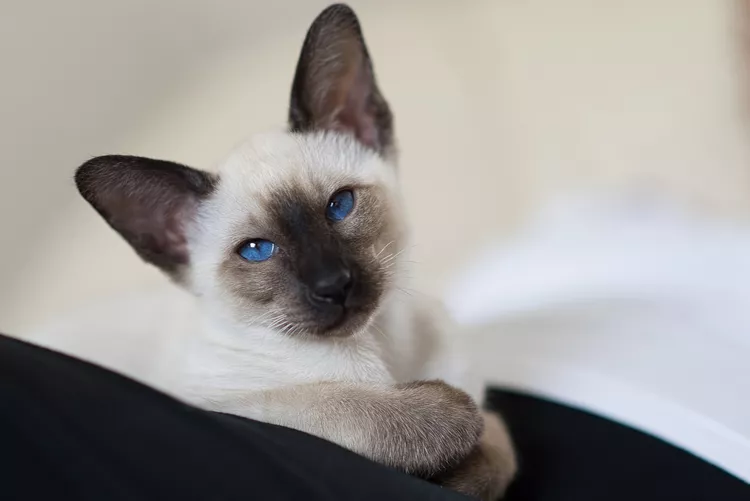- 01 of 08
Persian
Persians are the quintessential flat-faced cats, famous for their distinctive scrunched noses and luxurious long fur. As one of the oldest cat breeds, their history dates back to the 1600s. Although their exact origins are a bit unclear, it's believed they originated in Mesopotamia, later known as Persia (modern-day Iran), which is where they get their name.
Beyond their appearance, Apted says this breed is known for their calm and affectionate nature, making them perfect lap cats. Just be sure to detangle their long fur daily with a wide-toothed metal comb, followed by brushing, to prevent matting and remove loose hair.
Breed Overview
Height: 10 to 15 inches
Weight: 7 to 12 pounds
Personality/Temperament: Sweet, gentle, affectionate, laid-back
Energy Level: Calm
Coat and Color: Long hair; Solid, tabby, tortoiseshell, bicolor; Blue, black, white, red, cream, chocolate, lilac, silver, golden
Life Span: 15 to 20 years
- 02 of 08
Himalayan
The Himalayan, a cross between the Persian and Siamese, features the Persian's long, flowing coat and flat face, combined with the Siamese's striking blue eyes and distinctive color-point markings (darker ears, nose, feet, and tail). The breed is commonly believed to have originated at Harvard University in the 1930s, where researcher Clyde Keeler conducted a study focused on merging Siamese and Persian traits.
While known for being laid-back, Himalayans also have a kitten-like playful side and love interacting with their human and animal family members. Like Persians, Himalayans need daily combing and brushing to maintain their coat.
Breed Overview
Height: 10 to 12 inches
Weight: 7 to 12 pounds
Personality/Temperament: Laid-back, affectionate, gentle, friendly, and intelligent
Energy Level: Calm
Coat and Color: Long hair; Pointed markings; Chocolate, seal, blue, lilac, red
Life Span: 9 to 15 years
- 03 of 08
British Shorthair
British shorthairs descended from cats brought to Great Britain by the Romans, which then interbred with local feral cats. Over time, these cats evolved into the British shorthair, characterized by their dense coat, round face, and teddy bear-like appearance. While they have a slightly flat-faced look, their muzzle is not as short as that of Persians or Himalayans.
British shorthairs are affectionate without being overly demanding, making them ideal for those who want a loving but relatively independent cat. They are fairly low-maintenance compared to long-haired breeds, but their thick coats benefit from brushing once or twice weekly.
Breed Overview
Height: 12 to 14 inches
Weight: 7 to 17 pounds
Personality/Temperament: Affectionate, easy-going, and friendly
Energy Level: Calm
Coat and Color: Short hair; Tabby, tortoiseshell, calico, bicolor; White, black, blue, red, cream, smoke, silver, golden
Life Span: 12 to 16 years
- 04 of 08
British Longhair
The British longhair was developed in the early 20th century when British shorthairs were bred with Persians to introduce long-haired traits. This breed has a round face and short nose, giving them a moderately smooshed-face look.
British longhairs tend to be quite food-motivated and intelligent, so you can likely teach them some tricks (if you can get them to get up from their cozy nook, that is). Due to their long locks, this breed requires daily combing and brushing to keep their fur in top condition.
Breed Overview
Height: 12 to 14 inches
Weight: 8 to 16 pounds
Personality/Temperament: Affectionate, social, mellow, loyal
Energy Level: Calm
Coat and Color: Long hair; Bicolor, solid, tabby; Black, blue, gray, brown, beige, lavender, red, white
Life Span: 12 to 15 years
Continue to 5 of 8 below - 05 of 08
Exotic Shorthair
This breed was developed in the US in the 1960s when breeders bred Persians with American shorthairs. Exotic shorthairs share many of the Persian's characteristics (including a flat face) but have a shorter double-coat that requires less grooming, thus earning them the nickname ‘lazy man’s Persian,’ Apted says.
Exotics are known for their sweet, affectionate nature, and tend to get along with everyone, including children and other pets in the house. They have relatively low activity needs, but won’t pass up a good play session with a fishing pole feather teaser.
Breed Overview
Height: 10 to 12 inches
Weight: 10 to 12 pounds
Personality/Temperament: Affectionate, social, loyal
Energy Level: Calm
Coat and Color: Short hair; Tortoiseshell, bicolor, tricolor, tabby, smoke, shaded;
Black, blue, gray, brown, beige, lavender, silver, red, white
Life Span: 8 to 15 years
- 06 of 08
Scottish Fold
“Scottish folds, also known as Coupari cats, are easily identifiable by their unique folded ears, expressive eyes, and thick, plush fur,” Apted says. Their rounded faces and short, wide noses also gives them a moderately flat-faced look.
This breed originated in Scotland in the 1961 when a kitten with folded ears was discovered in a litter of otherwise normal-eared kittens. This kitten was then bred with domestic cats and British shorthair cats to establish the folded ear trait.
“When it comes to temperament, they’re known for their sweet and loyal personalities, often forming strong bonds with their pet parents,” Apted says. They’re playful and enjoy interactive toys but are also content to curl up in a cozy spot.
Breed Overview
Height: 8 to 10 inches
Weight: 6 to 13 pounds
Personality/Temperament: Affectionate, social, playful, intelligent
Energy Level: Calm
Coat and Color: Short or long hair (a long-haired variant is less common); Tabby, tortoiseshell, and calico; Brown, gray, black, red, cream, white
Life Span: 11 to 14 years
- 07 of 08
Selkirk Rex
The Selkirk Rex is a relatively new breed that originated in the United States in 1988. The breed began when a Montana cat breeder discovered a curly-coated kitten in a litter of otherwise straight-coated kittens. This kitten was bred with a Persian (and later British shorthairs and Exotics), establishing the Selkirk Rex breed, which is one of only four breeds of cats with wavy fur.
Selkirk Rex cats stand out with their curly fur and round, moderately flat faces, giving them a whimsical, teddy bear-like appearance. These cats are very loving (and sometimes a little needy), but not overly demanding. They enjoy interactive play and are known for having lots of personality.
Breed Overview
Height: 9 to 11 inches
Weight: 6 to 16 pounds
Personality/Temperament: Affectionate, social, loyal, curious
Energy Level: Calm
Coat and Color: Long or short hair; All patterns; Black, blue gray, brown, beige, lavender, silver, red, white
Life Span: 15 to 20 years
- 08 of 08
Burmese
Burmese cats are recognized for their round faces with a slightly flat profile, large yellow eyes, and short noses, giving them a moderately flat-faced appearance. They have a compact, muscular build and a short, glossy coat with a satin-like feel. The majority of today’s Burmese trace their lineage back to a single cat brought to America from Burma in 1930. This cat was bred with Siamese cats, resulting in the Burmese breed.
Burmese cats have been described as “dog-like” in that they tend to develop strong bonds with their humans and love following them around. As such, they don’t do well being left alone for long periods of time. These kitties are also very curious and enjoy interactive play, making them a lively and engaging addition to any household.
Breed Overview
Height: 9 to 13 inches
Weight: 8 to 15 pounds
Personality/Temperament: Alert, affectionate, friendly, intelligent, playful, loyal
Energy Level: Active
Coat and Color: Short hair; Tortoiseshell, solid, or pointed markings; Platinum, blue, gray, brown, champagne, lilac, red, cream
Life Span: 15 to 20 years
Breeds to Avoid
If you’re drawn to the flat-faced look, any of the breeds mentioned above would be an excellent choice. With other popular cat breeds like the American shorthair, Siamese, Maine Coon, ragdoll, Siberian, and Bengal, you won’t find that distinctive smooshy face.
It’s important to remember that welcoming a flat-faced cat to your family comes with extra responsibilities and extra costs. These breeds require monitoring for potential health issues, such as respiratory problems or dental concerns, related to their unique facial structure. If health issues arise, you should contact your veterinarian as soon as possible.
